| |

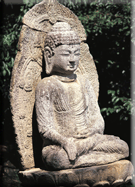
Inherent Tensions Between
Buddhism and Christianity:
Detailed in One
Astonishing Code
(and Its Contexts)
We began by looking for occurrences of Siddhartha as a Bible code and found two instances. The one with the shortest skip (-4,543) also included Jesus in the extended code. But not only that, the code had a profound message�Buddhism and Christianity conflict with one another in some ways. The full code reads:
Siddhartha has declined Jesus' hand,
and in them they identified a crisis.

This startling code raises several questions:
- What crisis exists between Buddha and Christ?
- What did Buddha decline? What does Jesus' hand represent?
- Didn't Buddha live before Christ? How, then, could this code make any sense?
- Is there anything remarkable about the verses where the letters of this code appear? Do some of these verses:
- Express Buddha's views? (To find this in the Old Testament would be unexpected.)
- Express Christ's views, as distinct from typical Old Testament views? (Also unexpected.)
- Give us pointed clues as to what the crisis is?
- Reiterate the content of the code itself?
- Do these verses touch on ALL significant aspects of the crisis between Buddha and Christ?
- Are there any patterns in terms of similar subject matter for the verses where the letters of each word in the code appear?
We will look at each of these questions in turn.
1. What crisis exists between Buddha and Christ?
A number of recent authors have argued that Buddha and Christ are so similar that they could have been brothers. While this might be suggested by focusing only on similarities between the two, an in-depth look at differences (see the next article) between them strongly supports the notion that there is a serious crisis between them. Here is the essence of these dramatic differences:
- Jesus offers salvation to all men through faith in Him. Buddha sought and taught that salvation can be attained by becoming enlightened�through finding ultimate truth within one's self. No redeemer outside of one's self, such as Jesus, is needed for this to occur. Whether God exists or not, Buddha taught that God is not needed for someone to become enlightened and to attain Nirvana.
- Jesus taught dualism (i.e., that reality consists of two opposite natures). He believed in the reality of good vs. evil, virtue vs. sin, and heaven vs. hell. Buddha taught that any appearance of dualism is an illusion, and is not part of ultimate reality, which he claimed had only one nature. The salvation Jesus offers is essential because, without it, God will fully judge every person for their sins. To Buddha, however, sin and evil, are an illusion that must be rejected as part of becoming enlightened.
- Being a Christian means entering into an interactive, personal relationship with Jesus. This involves a human being, with a distinct personality and an eternal soul, relating to a personal God who is all knowing, all powerful and eternally existent. Buddha taught that people do not have a soul and that enlightenment can only be attained by transcending the soul, the self and any individual personality. The very things that are the most important aspects of Christianity are regarded as illusions by the Buddhist.
- Buddha taught that desire is the cause of suffering, and so, all desire must be eliminated in order for suffering to cease. Christ taught that suffering can result from many sources, desire only being one of them. He also taught that some desires are given by God to people as good and wholesome emotions, and that such desires are not a cause of suffering.
- Buddha taught that the way to enlightenment is through habitual, solitary meditation. Christ emphasized the critical importance of group worship, prayer, study and community.
- Buddha taught a style of meditation that involves either: (1) emptying of the mind of everything, or (2) focusing on desired states of being (e.g., peace, solitude, oneness with all conscious beings), without inclusion of God or any context including God. Christ urged a worship of God in which one's mind and heart are filled with thoughts and feelings about God and His attributes and actions. He undoubtedly endorsed regular meditation on the Bible and its specific verses.
2. What does Jesus' hand represent? What offer by Jesus was declined by Buddha?
In the Bible, the hand of God represents the delivery of His judgment on a person. In fact, the first letter of the word Jesus in this code appears in a verse where "the LORD's hand" is used in this way: "It is more bitter for me than for you, because the LORD's hand has gone out against me!" (Ruth 1:13b, NIV). A hand is also used as an instrument of judgment in another verse where a letter from the Hebrew word for declined (from the code) appears: "And I saw it come close to the ram, and it was furious against it, and it struck the ram, and broke its two horns; and the ram had no power to stand before it, but it threw it down to the ground, and trampled upon it, and there was none who could save the ram from his hand." (Daniel 8:7, Keys, emphasis ours)
As Peter was preaching he said, "He [Christ] commanded us to preach to the people and to testify that he is the one whom God appointed as judge of the living and the dead." (Acts 10:42, NIV) So it is Jesus who is the hand of God in judging every person, including Buddha, to an eternal destiny in either heaven or hell. Jesus offered salvation to Buddha by way of belief in Him (God), and Buddha refused that offer.
3. Didn't Buddha live before Christ? How, then, could this code make any sense?
Yes, Buddha lived four-and-a-half centuries before Jesus. If Jesus were just a man, this code would make no sense. However, if Jesus were, as the Bible claims, part of the Trinity of God prior to his coming to earth as a baby in Bethlehem, He existed eternally prior to 1 AD, and so Jesus preceded Buddha, and the code could make sense.
A key theme in the Siddhartha code is Buddha's refusal to accept Jesus's hand. The eternally existent Jesus offered escape to Buddha from the inexorable pain of karma to a personal relationship with a personal God. However, Buddha refused that offer when he developed (what he believed was) a way of escape from suffering by becoming enlightened. That such an offer was made cannot be proven, since details of the life of Buddha were preserved only by oral tradition for about four centuries before being committed to writing. That Gautama Buddha did not realize that he was talking to Jesus specifically is most likely, since the identity of Jesus was not known to mankind at that time. Christian scholars contend, however, that Jesus was actively present throughout the Old Testament, mostly during time periods ranging from 1600 to 400 BC, being referred to in that text as the Angel of the Lord and even as God Himself. For example, in an article on the "Angel of the Lord" in the Baker Encyclopedia of the Bible, it states, "A third suggestion, coming from the time of the early church fathers, is that one can see in this figure the pre-existent 'Word of God': Jesus Christ, the second person of the Trinity functioning in the Old Testament. In certain texts, it seems impossible to distinguish between the angel of the Lord and the Lord himself."
4. Is there anything remarkable about the verses where the letters of this code appear? Do some of these verses:
- Express Buddha's views?
The verses where the last two letters of the Siddhartha code appear are in the book of Ecclesiastes, and they read like some of the younger Buddha's views:
And I saw that all labor and all achievement spring from man's envy of his neighbor. This too is meaningless, a chasing after the wind. (Ecclesiastes 4:4, NIV)
All things come alike to all; there is one event [i.e., death] to the righteous, and to the wicked; to the good and to the pure, and to the impure; to him who sacrifices, and to him who does not sacrifice; as is the good man, so is the sinner; and he who swears as he who shuns an oath. (Ecclesiastes 9:2, Keys)
Ask the former generations and find out what their fathers learned, for we were born only yesterday and know nothing, and our days on earth are but a shadow. (Job 8:8-9, NIV)
- Express Christ's views, as distinct from standard Old Testament views?
Christ provided a way to become justified as being righteous before God, through faith in Him as Savior, apart from doing good works. In just one verse, we find this approach to salvation outlined: "He prays to God and finds favor with him, he sees God's face and shouts for joy; he is restored by God to his righteous state." (Job 33:26, NIV)
We also find the way of salvation through the mercy of God expressed in another verse where a letter of the code appears: "Surely then you will count my steps but not keep track of my sin. My offenses will be sealed up in a bag; you will cover over my sin." (Job 14:16-17, NIV)
- Give us pointed clues as to what the crisis is?
Two of the three verses where the letters of the Hebrew word for "crisis" zero in on a conflicting difference between Buddhism and Christianity. Both verses are quite relevant to the nature of meditation. For example, Proverbs 23:17 states, "Let not your heart envy sinners, but continue in the reverent and worshipful fear of the Lord all the day long." (AMP) Buddha taught a style of meditation that involves either: (1) emptying of the mind of everything, or (2) focusing on desired states of being (e.g., peace, solitude, oneness with all conscious beings), without inclusion of God or any context including God.
In contrast, Christ urged a worship of God in which one's mind and heart are filled with thoughts and feelings about God and His attributes and actions. He also endorsed regular meditation on the Bible and its specific verses.
Secondly, Proverbs 18:1 reads, "He who keeps himself apart, desires to satisfy his own vanity; he breaks out against all sound judgment." (Keys) It would seem that this verse grates against the Buddhist ideal of utter withdrawal to total devotion in prolonged meditation. Though Jesus would pull away to be alone for a short time, it was only to prepare him for the intense periods of interacting with his disciples and interested followers, and doubters. Drawing away was a way of recharging for his next encounter with people.
Other verses cited in the answers provided in Section 5 also relate to the nature of this conflict.
- Reiterate the content of the code itself?
One of the verses where a letter of the Siddhartha ELS appears is Esther 2:1, which reads, "Later when the anger of King Xerxes had subsided, he remembered Vashti and what she had done and what he had decreed about her." (NIV) As told in chapter one, the King had order his queen (Vashti) to appear at his banquet, and she declined to come. So the theme of declining an invitation is repeated in the literal text.
5. Do these verses touch on ALL significant aspects of the crisis between Buddha and Christ?
Yes. Let's look at each of the individual elements of this crisis and the verses that relate to those elements.
- Jesus offers salvation to all men through faith in Him. Buddha taught that salvation can be attained by becoming enlightened�through finding ultimate truth within one's self. He also claimed that no redeemer, such as Jesus, is needed to become enlightened. Nor does God even need to exist for someone to become enlightened and to attain Nirvana.
One of the verses where a letter of the Siddhartha code appears is Job 14:16. In that verse, and its context, the concept of a loving creator who will forgive sins is directly presented:
If a man dies, will he live again? All the days of my hard service I will wait for my renewal to come. You will call and I will answer you; you will long for the creature your hands have made. Surely then you will count my steps but not keep track of my sin. My offenses will be sealed up in a bag; you will cover over my sin. (Job 14:14-17, NIV, emphasis ours)
- Jesus taught dualism (i.e., that reality consists of two opposite natures). He believed in the reality of good vs. evil, virtue vs. sin, and heaven vs. hell. Buddha taught that any appearance of dualism is an illusion, and is not part of ultimate reality, which he claimed had only one nature. The salvation Jesus offers is essential because, without it, God will fully judge every person for their sins. To Buddha, however, sin and evil, are an illusion that must be rejected as part of becoming enlightened.
One of the verses where a letter of the Siddhartha code appears is Job 2:2, which portrays Satan as a real spiritual being:
And the LORD said to Satan, "Where have you come from?" Satan answered the LORD, "From roaming through the earth and going back and forth in it." (NIV)
In the verses that follow, Satan is allowed by God to heap severe suffering on Job, even though Job was a totally righteous man. This passage dramatically portrays the reality of evil in this world, in direct contradiction with the views of Buddha.
- Being a Christian means entering into an interactive, personal relationship with Jesus. This involves a human being, with a distinct personality and an eternal soul, relating to a personal God who is all knowing, all powerful and eternally existent. Buddha taught that people do not have a soul and that enlightenment can only be attained by transcending the soul, the self and any individual personality. The very things that are the most important aspects of Christianity are regarded as illusions by the Buddhist.
In Job 33:26 and its context (vs. 22-28) we see a mediator portrayed who ransoms sinners from the pit, transforms them.
His soul draws near to the pit, and his life to the messengers of death. "Yet if there is an angel on his side as a mediator, one out of a thousand, to tell a man what is right for him, to be gracious to him and say, 'Spare him from going down to the pit; I have found a ransom for him' then his flesh is renewed like a child's; it is restored as in the days of his youth. He prays to God and finds favor with him, he sees God's face and shouts for joy; he is restored by God to his righteous state. Then he comes to men and says, 'I sinned, and perverted what was right, but I did not get what I deserved. He redeemed my soul from going down to the pit, and I will live to enjoy the light.' " (Job 33:22-28, NIV, emphasis ours)
The above passage is quite parallel to 1 Timothy 2:3-6: "This is good, and pleases God our Savior, who wants all men to be saved and to come to a knowledge of the truth. For there is one God and one mediator between God and men, the man Christ Jesus, who gave himself as a ransom for all men. . . ." (NIV)
- Buddha taught that desire is the cause of suffering, and so, all desire must be eliminated in order for suffering to cease. Christ taught that suffering can result from many sources, desire only being one of them. He also taught that some desires are given by God to people as good and wholesome emotions, and that such desires are not a cause of suffering.
As portrayed in the second chapter of the book of Job, cited above, suffering can result from the direct attacks of Satan, apart from any desires the victim (Job) may have had. So, from a Judeo-Christian point of view, not all suffering is the result of desire.
In addition, in Job 33:22-28, cited above, we have a portrayal of positive desires being fulfilled within the context of a personal relationship with a personal God.
- Buddha taught that the way to enlightenment is through habitual, solitary meditation. Christ emphasized the critical importance of group worship, prayer, study and community.
The tension between Buddhist and Christian views of the nature of meditation and its value were discussed above in Section 4c.
- Buddha taught a style of meditation that involves either: (1) emptying of the mind of everything, or (2) focusing on desired states of being (e.g., peace, solitude, oneness with all conscious beings), without inclusion of God or any context including God. Christ urged a worship of God in which one's mind and heart are filled with thoughts and feelings about God and His attributes and actions. He undoubtedly endorsed regular meditation on the Bible and its specific verses.
Although one is not prohibited by Buddhism from meditating on the attributes of God or on Bible verses, the whole emphasis of Buddhist practice is on focusing on other things during meditation. This is also discussed above in Section 4c.
6. Are there any patterns in terms of similar subject matter for the verses where the letters of each word in the code appear?
The chart below provides a summary reference of the words in the Siddhartha code, the specific Hebrew letters comprising the code, the verse each letter appears within and the theme of the passage where the verse appears.
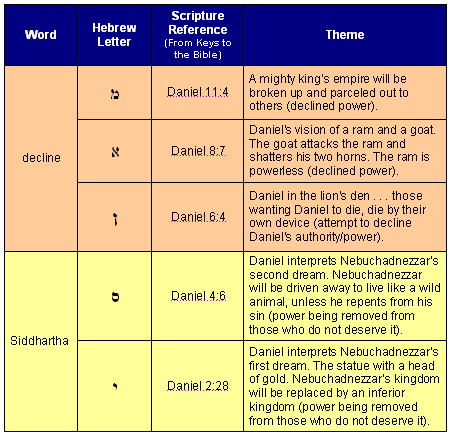
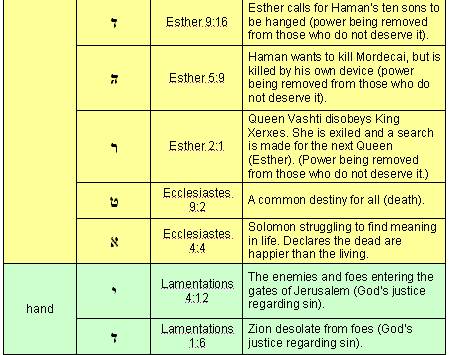
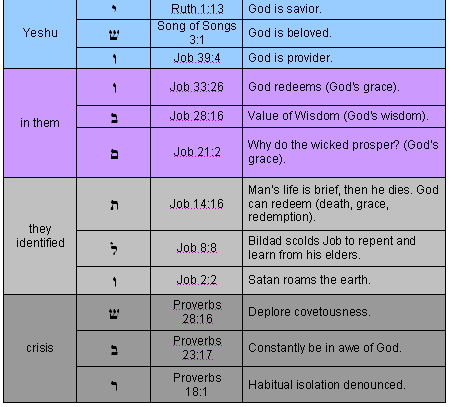
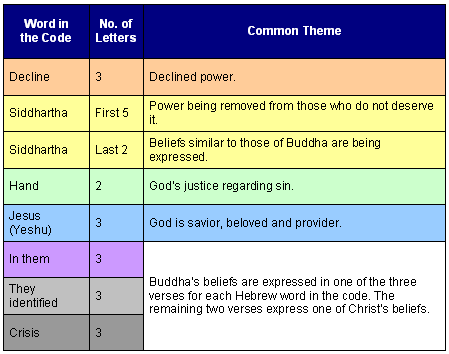
The odds that the exceptionally high degree of correlation between the content of the Siddhartha code and the verses where its letters appear is due to chance would be very difficult to quantify. On the other hand, the whole thing just fits together much too tightly to be a fluke. Here is a 24-letter-long code with a skip of 4,543 letters between each verse that its letters appear in. Objective consideration of this issue by any impartial observer should lead to the conclusion that coincidence is not a rational explanation.
References
Elwell, Walter A., ed. 1988. Angel of the Lord. Baker Encyclopedia of the Bible 1:90. Grand Rapids, MI: Baker Book House.
Scripture quotations marked (Keys) are taken from Keys to the Bible software program, which is available in our online store.
Scripture quotations marked (AMP) are taken from the Amplified Bible, Copyright �1954, 1958, 1962, 1964, 1965, 1987 by The Lockman Foundation. Used by permission.
Scripture quotations marked (NIV) are taken from the HOLY BIBLE, NEW INTERNATIONAL VERSION�. NIV� Copyright �1973, 1978, 1984 by International Bible Society. Used by permission of Zondervan. All rights reserved.
Continue to Buddha and Christ: Similarities and Contrasts
|
Enjoy finding your own Bible codes.
Bible code search software is available in our online store.
Subscribe Free! Sign Up Today!
Become a member of the non-profit Isaac Newton Bible Code Research Society.
Not only will you be part of the world's leading organization researching and publicizing Bible and Torah codes, but you will receive Bible Code Digest absolutely free, including . . .
- Latest Bible Code News
- Easy-to-Understand Bible Code Feature Articles
- Exciting Inside Information from Leading Code Researchers
- Details of Great New Discoveries
- Summaries of the Latest Battles Between Code Proponents and Skeptics
Stay current on Bible code news. Be first to hear about all of the latest Bible code discoveries.
Sign up to receive Bible Code Digest today.
|
|


 
Bombshell examines two massive, recently discovered clusters of codes in the Hebrew Old Testament. To read more about Bombshell, click here, or click below to order from Amazon today!
 
|







